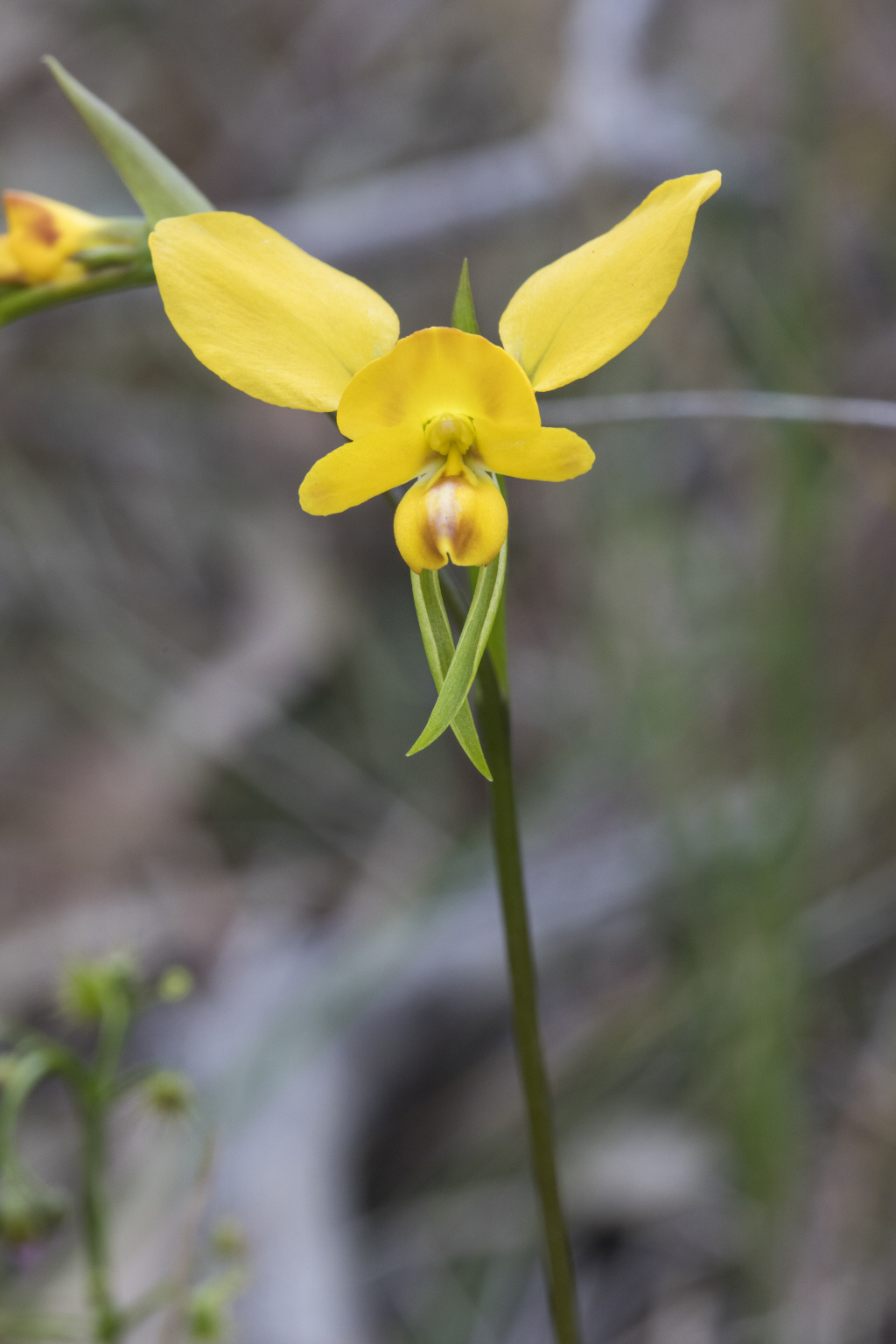Diuris orientis
D.L.JonesFlowering plant moderately stout, 10–40 cm tall. Leaves 1–3, linear to lanceolate, channelled, 10–30 cm long. Flowers (1–)2–4(–6), yellow, with reddish brown and purplish suffusions; pedicel (excluding ovary) 2–4 cm long, slender, partly enclosed within bract; dorsal sepal projected forward then curved upwards, broad and rounded, 9–15 mm long, shorter than petals and lateral sepals, tip slightly pointed; lateral sepals deflexed, usually parallel (but sometimes crossed), linear, 12–22 mm long, with oblique, blunt tips, stoutish, green; petals obliquely erect or spreading, 15–25 mm long, shortly clawed, lamina ovate or elliptic. Labellum projected forward or deflexed, dark reddish brown, purple and yellow blended together, 10–14 mm long, 3-lobed; lateral lobes nearly as long as mid-lobe, broadly oblong, asymmetric, margins entire; mid-lobe wedge-shaped, strongly folded, apex rounded, emarginate; callus ridge single, narrowing and merging with keel near midway. Column wings about same height as anther. Flowers usually Sep.–Nov.
Wim, GleP, VVP, VRiv, GipP, OtP, WaP, Gold, CVU, GGr, DunT, NIS, EGL, EGU, WPro, HSF, HNF, OtR, Strz, VAlp. Also SA, NSW, Tas. Locally common in light forest and heathlands across southern Victoria with isolated records from the north-east.
Previously confused with Diuris longifolia and D. corymbosa, both now considered to be endemic in Western Australia.
Hybridizes sporadically with Diuris behrii, D. chryseopsis, D. palustris, D. pardina and D. sulphurea.
Entwisle, T.J. (1994). Orchidaceae. In: Walsh, N.G.; Entwisle, T.J., Flora of Victoria Vol. 2, Ferns and Allied Plants, Conifers and Monocotyledons, pp. 740–901. Inkata Press, Melbourne.
 Spinning
Spinning


